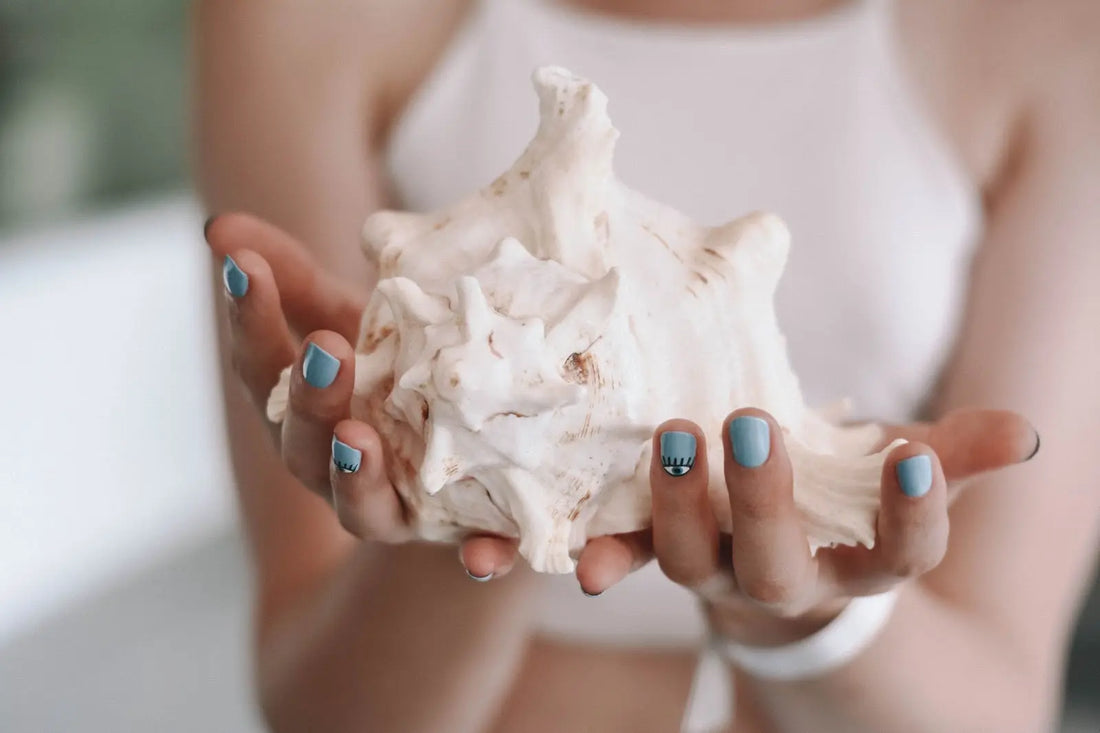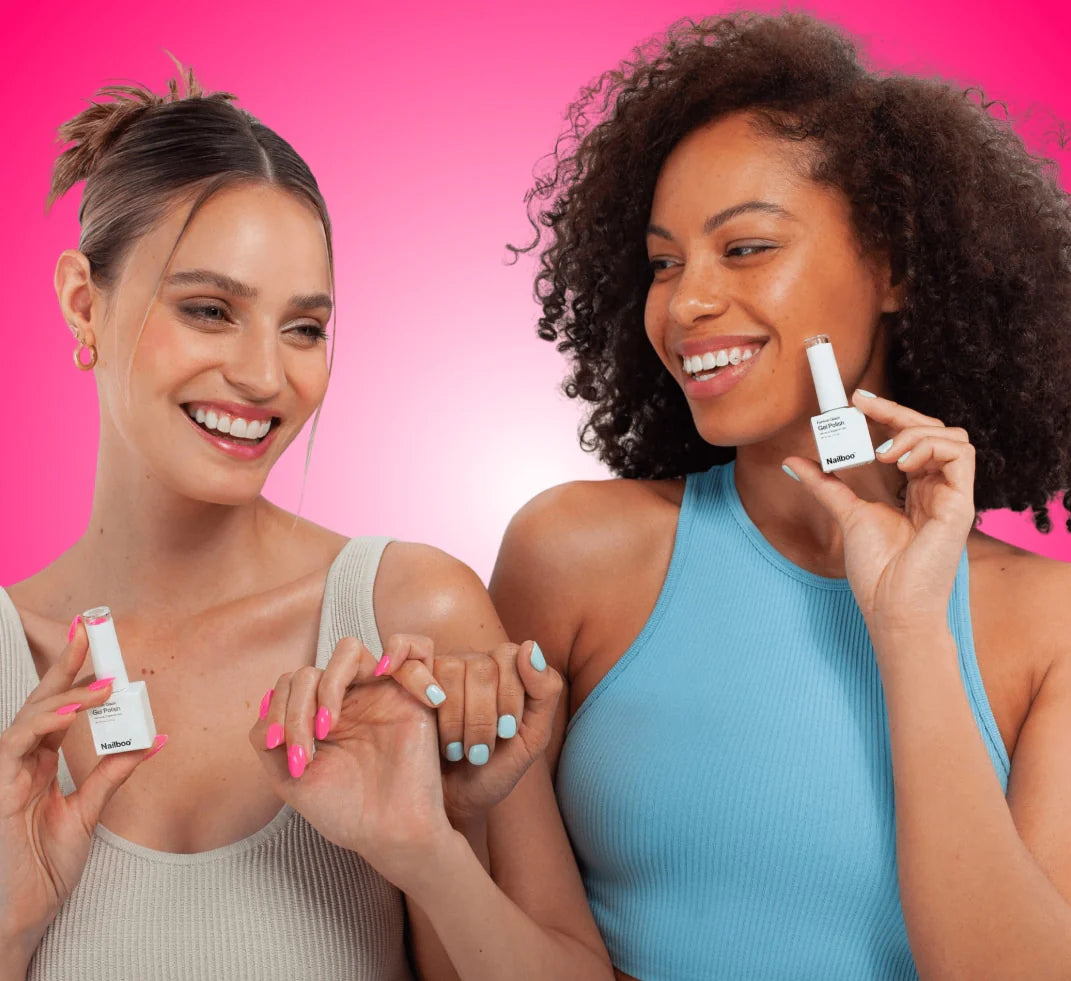There are many different ways to approach your next manicure, whether you’re booking an appointment at the salon or you want to try out a new look right at home. But with so many colors, styles, and materials to pick from, how do you know which of them is going to be the best fit for your needs?
That’s where Nailboo can help. We don’t just believe in delivering an easy-to-use dip nail kit that can provide that salon-quality manicure without the trip. We’re also dedicated to providing the information and resources you need to decide which aesthetic and nail choices are best for your nails and your new look.
Some of the most common styles to pick from include gel nails and shellac nails, which share a lot of similarities (although, if we’re being honest, they both pale in comparison to dip powder manis). Here’s what you’ll want to know about the pros and cons of both shellac and gel nails before deciding on your next manicure.
Shellac Nails at a Glance
Shellac nails are a style that blends both traditional nail polish and gel nail polish for something entirely new. They are a specific brand of nail polish that uses an innovative serum for protecting your look without taking away from the styles you love. Here are some of the benefits and drawbacks of trying out shellac nails for yourself today.
Pros of Shellac Nails
There are so many benefits to trying out shellac nails that it can be difficult to know where to start. Here are just a few.
You’ll Love the Look
Shellac nails provide a beautiful, glossy style, but they still deliver on a natural look that you’ll find with most traditional nail polish.
You Have Many Choices
Nail art is a unique form of expression and personal style—and you deserve the chance to show that. With a shellac manicure, you’ll have more than 150 different colors to pick from, which include pastels, jewel tones, earth tones, and more. Looking for glitter or a shimmer? You’ll have that too!
They Protect Your Nails
One of the main draws of a shellac nail design is that they’re very protective. Not only will they help to keep your nails safe from damage like tears and breaks, but they’re actually a very low-impact type of manicure, as well, so you’ll worry less about potential problems or peeling down the line.
Of course, it’s also important to make sure your nails are as strong and healthy as possible before applying your manicure, to reduce the likelihood of breaking or damage and to keep them safe for a long time to come.
They’re Easy to Remove—Just Not Yourself
You’ll still want to make sure that your shellac nails are being removed right, preferably by a certified technician.
You Don’t Need to Rough Up the Nail Bed
Shellac nails deliver on a lot of the durability and long-lasting benefits of other application methods. A benefit of shellac over other options, however, is that they don’t require you or the technician to rough up the nail bed first, which is a common practice for other nail enhancements and can cause damage and weakening over time.
They Really Last: You deserve stylish, personalized manicures without the hassle—and shellac nails are an excellent option. Not only can you apply them yourself at home, if you’re really interested, but they’re guaranteed to last in great shape for longer than a lot of other options. On average, shellac nails will look good for at least two weeks, but with the proper extender coat, you can get them to last at least three with ease.
Cons
The more you know about the different nail polish and nail application processes, the easier it will be to pick the proper manicure type for your overall wellness and style needs. Here are a few of the cons you’ll want to keep in mind when it comes to shellac nails.
You Can Do Them At Home—Sort Of
Being able to apply your own shellac nails at home is a bit of a mixed bag. While you can get a great look over time, the tools can be a little pricey, and you really want to make sure that you’re performing the process right, in order to keep your nails safe and protected. That is especially true when it comes to the removal process. While there are ways to remove your shellac nails at home, it’s safer and more reliable to have a certified professional take them off.
They Chip Easily
One of the benefits of shellac nails is that they deliver on that beautiful, natural look, which you can’t get with a lot of other types of nail polish or application. But it’s all about balance. Because shellac nails use traditional nail polish, in addition to a gel layer, they’re a little more prone to chipping than methods like the gel application, which means you may need touch-ups more than with other types of nails.
They Can’t Be Applied to Damaged Nails
It’s a good rule of thumb to allow your nails and nail beds to heal before applying any kind of nail polish or nail enhancement. Shellac nails may be a better option for individuals with thin or brittle nails, but it’s usually best to let the nail grow strong again first since shellac nails do require UV light and acetone for the application and removal processes.
Gel Nails at a Glance
There’s a reason that gel nails are so popular. Not only do they deliver on luxurious, glossy looks every time, but they last easily and come in many unique styles. Here’s what you’ll want to consider about gel nail application.
Pros of Gel Nails
Here are some of the top benefits of getting gel nails for your next manicure.
They Dry Quickly
Gel nails are dried under a UV light, which means no more waiting around and potentially smudging your new manicure.
They Don’t Chip Easily
If you have a labor-intensive job or hobby or you’re just prone to broken or chipped manicures, then gel nails are a great option for your needs. They won’t chip easily, which means you won’t need to worry about getting your hands dirty.
They’re Built to Last
Gel nails aren’t just durable; they’re long-lasting. There are many different types of gel nails, but on average, a gel nail application will last two or three weeks, sometimes longer, depending on your type. That means fewer salon visits or touch-ups.
Cons of Gel Nails
Like all nail applications, gels come with a few drawbacks, including some of the following:
They Use UV
Many salons have been switching over to LED lights to avoid the damage that comes with UV light, like spots, discoloration, and more serious conditions. UV lights are still common, however, so you want to take precautions when getting your gel nails applied.
They Require the Nail to Be Roughened
In order to get the application to really stick, it’s common for the technician to actually roughen up the nail so the surface isn’t so smooth. While you’ll want to avoid any nail enhancement if you have damaged or injured nails, gels aren’t a great option if your nails are brittle or prone to breaking.
Removal Requires a Professional
Technically, there are ways to remove your gel nails at home. That said, there are many ways the process can actually damage your nails if not performed properly, so it’s always best to let the professionals take care of the removal.

This Is Why You Need Nailboo
There are so many different nail applications and polish types to pick from—and that’s great! It means that no matter your style or your personal wellness needs, there’s a manicure method available to you. Dip powder manicures are, when it comes down to it, the best option out there. They’re quick and easy to apply, long-lasting, and best of all, one kit will last you up to thirty uses.
Whatever you choose for your next manicure, Nailboo is here to help. Our company works to bring both personal manicure kits straight to your home and the information you need to keep your nails both healthy and stylish. It’s easy to get started with one of our dip kits today.
Sources:
From ancient Egypt to Cardi B: a cultural history of the manicure | The Guardian

